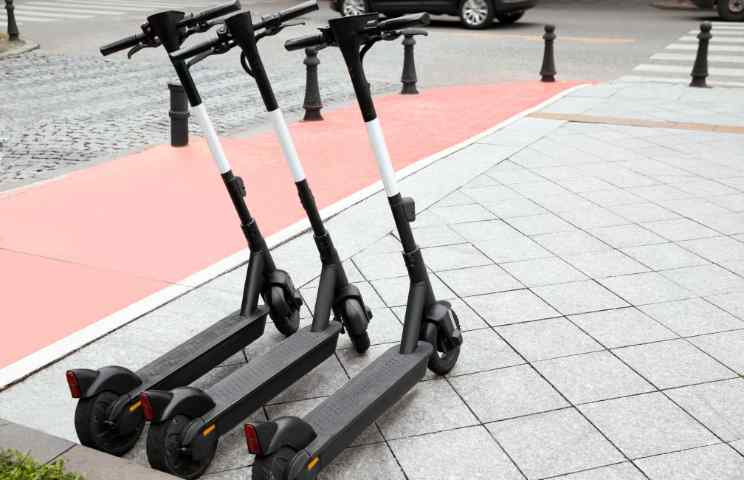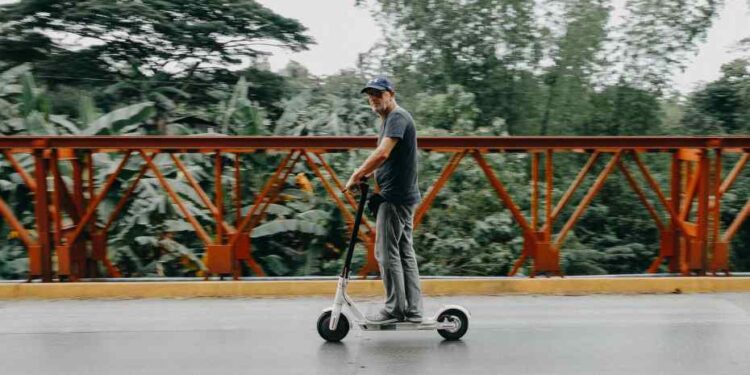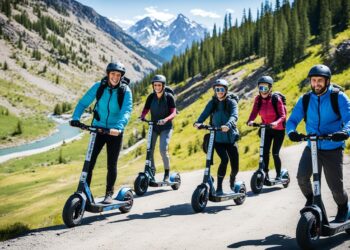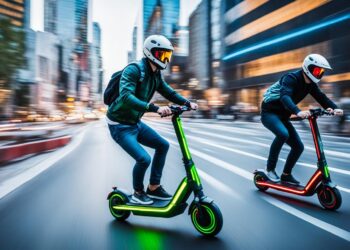Bird scooters have become a popular mode of transportation in many urban areas. These electric scooters are convenient, affordable, and environmentally friendly. One of the most important factors to consider before hopping on a scooter is the speed at which it travels. In this article, we will explore the question of how fast Bird scooters go and discuss other related factors that impact their speed.
Introduction
Bird scooters are electric scooters that can be rented on demand through a mobile app. They were first introduced in 2017 in Santa Monica, California, and have since spread to cities all over the world. The scooters are dockless, meaning they can be picked up and dropped off almost anywhere. They are a popular alternative to traditional modes of transportation such as cars, bikes, and public transportation.
How Fast Can Bird Scooters Go?
The maximum speed of Bird scooters is 15 miles per hour (24 kilometers per hour). This is a relatively fast speed for a scooter, but it is not as fast as other forms of transportation such as cars or motorcycles. It is, however, faster than the average speed of a bicycle, which is around 10-15 miles per hour.
The speed of a scooter can be controlled by the rider. The scooter has a thumb lever on the handlebars that can be pressed to increase or decrease the speed. The lever also serves as a brake when pressed down.
Factors That Affect the Speed of Bird Scooters
Several factors can impact the speed of Bird scooters. These include:
Battery Life
The battery life of the scooter is one of the most significant factors affecting its speed. The faster the scooter is driven, the quicker the battery drains. When the battery is low, the scooter will automatically slow down to conserve power. Riders should check the battery life before taking a Bird scooter and avoid draining it completely.
Weight Limits
Bird scooters have a weight limit of 220 pounds (100 kilograms). If the rider exceeds this weight limit, the scooter may not be able to reach its maximum speed. Riders should ensure they are within the weight limit before renting a scooter.
Terrain and Road Conditions
The terrain and road conditions can also affect the speed of a Bird scooter. For example, if the scooter is driven uphill, it will slow down, and if it is driven downhill, it may go faster than 15 miles per hour. Riders should be aware of the road conditions and adjust their speed accordingly.

Safety Considerations
It is essential to follow safety guidelines when riding a Bird scooter. The scooter should only be ridden in designated areas, such as bike lanes or on the road. Riders should wear a helmet and protective gear and avoid riding the scooter in inclement weather conditions. Additionally, riders should follow traffic rules and be aware of pedestrians and other vehicles on the road.
Comparison with Other Electric Scooters
Bird scooters are not the only electric scooters available for rent. Other popular electric scooter brands include Lime, Spin, and Jump. The maximum speed of these scooters is similar to that of Bird scooters, with a maximum speed of around 15 miles per hour. However, some models may have a higher or lower top speed, depending on the manufacturer and the battery life.
Potential Legal Implications
The use of Bird scooters can also have legal implications. In some cities, the use of electric scooters is regulated, and riders may be required to wear a helmet or follow specific traffic laws. Failure to follow these laws could result in fines or legal repercussions. Additionally, riders should be aware of their liability in the event of an accident.
Advantages and Disadvantages of Bird Scooters
Like any mode of transportation, Bird scooters have their advantages and disadvantages. Some of the advantages include their convenience, affordability, and environmental friendliness. They can also help alleviate traffic congestion and reduce carbon emissions. However, some of the disadvantages include safety concerns, potential legal implications, and the possibility of accidents.
Best Practices for Riding Bird Scooters
To ensure a safe and enjoyable ride on a Bird scooter, riders should follow some best practices. These include:
- Always wear a helmet and other protective gear
- Check the battery life before taking a scooter
- Avoid riding on uneven or bumpy roads
- Stay in designated areas for scooters, such as bike lanes or the road
- Be aware of other vehicles and pedestrians on the road
- Follow all traffic laws and regulations
Bird scooters are a convenient and environmentally friendly mode of transportation that can help alleviate traffic congestion in urban areas. However, riders should be aware of their speed limits, safety guidelines, and potential legal implications before hopping on a scooter. By following best practices and being aware of their surroundings, riders can have a safe and enjoyable ride on a Bird scooter.
FAQs
- Can I ride a Bird scooter without a driver’s license?
- Yes, you do not need a driver’s license to ride a Bird scooter. However, you must be at least 18 years old and have a valid credit card to rent a scooter.
- Are Bird scooters safe to ride?
- Bird scooters can be safe to ride as long as riders follow safety guidelines and best practices. It is important to wear a helmet and other protective gear, stay in designated areas for scooters, and be aware of other vehicles and pedestrians on the road.
- How do I rent a Bird scooter?
- To rent a Bird scooter, download the Bird app, create an account, and locate a scooter using the map in the app. Scan the QR code on the scooter with your phone to unlock it, and then start riding.
- Can I ride a Bird scooter on the sidewalk?
- It is not recommended to ride a Bird scooter on the sidewalk as it can be dangerous for pedestrians. It is best to ride in designated areas for scooters, such as bike lanes or the road.
- How fast do Lime and Spin electric scooters go?
- Lime and Spin electric scooters can also reach speeds of up to 15 miles per hour, similar to Bird scooters. However, it is important to check with the specific company for their speed limits and guidelines.


















